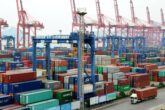March 20, 2017
China’s Growing Maritime Role in the South and East China Seas
Yusuke Saito, Lieutenant Commander, Surface Warfare Officer in the Japan Maritime Self-Defense Force, uses a contemporary understanding of China’s maritime strategy to project its maritime role into 2030. By taking advantage of the time and space advantages that Saito argues accrue to a status-quo challenger, the author forecasts that “China’s maritime role in the South and East China Seas will grow from China’s continental maritime perspective and strategy.” Saito recommends the U.S. Navy refocus to a sea-based, as opposed to a power projection, maritime strategy to best combat China’s intention to turn the South China Sea into “its inland sea.” India and South Korea are encouraged to play proactive roles in the South China Sea, and Saito recommends the U.S. consider enlisting Taiwan as part of an alliance against China.
Introduction
In the South and East China Seas, an abnormal state of affairs persists that cannot be defined as either peace or war. In the South China Sea, incidents such as island disputes, land reclamation, confrontations, clashes between maritime law enforcement vessels, freedom of navigation operations by US Navy (USN) and threats from the People’s Liberation Army Navy (PLAN) against them are heightening tensions in the region. In particular, China’s aggressive actions to expand its maritime control have attracted widespread attention. In the Paracel Islands, China has extended its runway on Woody Island and deployed surface-to-air missile systems. In the Spratlys, it has pressed ahead with rapid and large-scale land reclamation works on seven of the Spratly Islands and has built infrastructure including runways and ports that can be used for military purposes.
In the East China Sea, numerous close encounters have occurred. This includes helicopters and other aircraft flying close to destroyers belonging to Japan’s Maritime Self-Defense Force (JMSDF), PLAN destroyers illuminating fire-control system radars on a JMSDF warship, and Chinese fighter jets approaching Japanese and U.S. aircraft at unsafe distances. In 2016, the 121 Chinese government vessels crossed into the territorial waters of the Senkaku Islands – the second highest number in history.
Despite this worrisome maritime situation, U.S. President Donald Trump’s policy in the Asia–Pacific region is still unclear. For example, neither China nor the Asia–Pacific region are mentioned in the priority list in the new administration’s policy memo, obtained and released by Foreign Policy. Countries in this region are concerned that the Trump Administration might pursue some sort of a deal with China that may ignore regional countries, lack a long-term strategy, and focus on short-term economic interests. Admiral Blair, the former Director of National Intelligence and Commander of U.S. Pacific Command, expressed his concern about the new administration’s policy at the Center for Strategic and International Studies (CSIS) on November 29, 2016: “Overlaps in economy and security may result in deal-making in maritime security in the Asia–Pacific Region and will put some reality into this idea that the Pacific is big enough for both the United States and China.” Although it is not easy to predict the situation in the South and East China Seas in circa 2030, projection plays an important role in crafting a long-term perspective and preventing actors from simply reacting to events as they occur. This paper analyzes China’s maritime role in approximately 2030 on the basis of its maritime views and strategy.
The full working paper is available online.
More from CNAS
-
Trump Administration Realises That The Tariff Strategy Has Backfired: Lisa Curtis
Trump administration realises that the tariff strategy has backfired, says Lisa Curtis, senior fellow and program director at the Center for a New American Security.Watch the ...
By Lisa Curtis
-
Ep 187: Richard Fontaine on the “Reverse Kissinger”
Richard Fontaine, CEO of the Center for a New American Security (CNAS) and co-author of No Limits? The China-Russia Relationship and U.S. Foreign Policy, joins the show to dis...
By Richard Fontaine
-
A Stroll Through the Indo-Pacific, the Most Important Region in the World
In this episode, we get into what’s driving the Indo-Pacific’s security dynamics, from China’s threats to Taiwan to AUKUS and the Quad to stability (or lack thereof) on the Ko...
By Lisa Curtis
-
Assessing China’s Nuclear Decision-Making
China’s rapid nuclear buildup is raising questions about how the country makes decisions related to nuclear weapons. This policy brief analyzes that trend by presenting three ...
By Jacob Stokes




